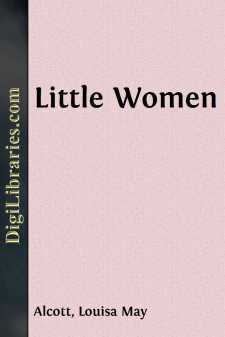Categories
- Antiques & Collectibles 13
- Architecture 36
- Art 48
- Bibles 22
- Biography & Autobiography 813
- Body, Mind & Spirit 142
- Business & Economics 28
- Children's Books 17
- Children's Fiction 14
- Computers 4
- Cooking 94
- Crafts & Hobbies 4
- Drama 346
- Education 46
- Family & Relationships 57
- Fiction 11829
- Games 19
- Gardening 17
- Health & Fitness 34
- History 1377
- House & Home 1
- Humor 147
- Juvenile Fiction 1873
- Juvenile Nonfiction 202
- Language Arts & Disciplines 88
- Law 16
- Literary Collections 686
- Literary Criticism 179
- Mathematics 13
- Medical 41
- Music 40
- Nature 179
- Non-Classifiable 1768
- Performing Arts 7
- Periodicals 1453
- Philosophy 64
- Photography 2
- Poetry 896
- Political Science 203
- Psychology 42
- Reference 154
- Religion 513
- Science 126
- Self-Help 84
- Social Science 81
- Sports & Recreation 34
- Study Aids 3
- Technology & Engineering 59
- Transportation 23
- Travel 463
- True Crime 29
Eugenie Grandet
by: Honore de Balzac
Categories:
Description:
Excerpt
I
There are houses in certain provincial towns whose aspect inspires melancholy, akin to that called forth by sombre cloisters, dreary moorlands, or the desolation of ruins. Within these houses there is, perhaps, the silence of the cloister, the barrenness of moors, the skeleton of ruins; life and movement are so stagnant there that a stranger might think them uninhabited, were it not that he encounters suddenly the pale, cold glance of a motionless person, whose half-monastic face peers beyond the window-casing at the sound of an unaccustomed step.
Such elements of sadness formed the physiognomy, as it were, of a dwelling-house in Saumur which stands at the end of the steep street leading to the chateau in the upper part of the town. This street—now little frequented, hot in summer, cold in winter, dark in certain sections—is remarkable for the resonance of its little pebbly pavement, always clean and dry, for the narrowness of its tortuous road-way, for the peaceful stillness of its houses, which belong to the Old town and are over-topped by the ramparts. Houses three centuries old are still solid, though built of wood, and their divers aspects add to the originality which commends this portion of Saumur to the attention of artists and antiquaries.
It is difficult to pass these houses without admiring the enormous oaken beams, their ends carved into fantastic figures, which crown with a black bas-relief the lower floor of most of them. In one place these transverse timbers are covered with slate and mark a bluish line along the frail wall of a dwelling covered by a roof en colombage which bends beneath the weight of years, and whose rotting shingles are twisted by the alternate action of sun and rain. In another place blackened, worn-out window-sills, with delicate sculptures now scarcely discernible, seem too weak to bear the brown clay pots from which springs the heart's-ease or the rose-bush of some poor working-woman. Farther on are doors studded with enormous nails, where the genius of our forefathers has traced domestic hieroglyphics, of which the meaning is now lost forever. Here a Protestant attested his belief; there a Leaguer cursed Henry IV.; elsewhere some bourgeois has carved the insignia of his noblesse de cloches, symbols of his long-forgotten magisterial glory. The whole history of France is there.
Next to a tottering house with roughly plastered walls, where an artisan enshrines his tools, rises the mansion of a country gentleman, on the stone arch of which above the door vestiges of armorial bearings may still be seen, battered by the many revolutions that have shaken France since 1789. In this hilly street the ground-floors of the merchants are neither shops nor warehouses; lovers of the Middle Ages will here find the ouvrouere of our forefathers in all its naive simplicity. These low rooms, which have no shop-frontage, no show-windows, in fact no glass at all, are deep and dark and without interior or exterior decoration. Their doors open in two parts, each roughly iron-bound; the upper half is fastened back within the room, the lower half, fitted with a spring-bell, swings continually to and fro....






















